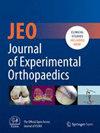Ultrasound findings and clinical testing for preoperative diagnosis of long head of the biceps pathology
Abstract
Purpose
To determine whether combining ultrasound (US) observations and clinical tests could substantially improve sensitivity for diagnosis of long head of the biceps tendon (LHBT) pathology compared to ultrasound alone and clinical tests alone.
Methods
The authors retrospectively assessed a consecutive series of 284 patients that underwent arthroscopic rotator cuff repair for isolated supraspinatus tears. LHBT pathology was assessed preoperatively using seven US observations ((i) hypervascularisation, (ii) upper gutter signal, (iii) gutter signal, (iv) upper gutter position, (v) gutter position, (vi) upper gutter surface and (vii) gutter surface) and four clinical tests specific to shoulder injuries (Speed, Yergason, Kibler tests and bicipital groove tenderness). Binary outcomes of each assessment were combined to calculate the diagnostic accuracy using intraoperative arthroscopy as reference.
Results
The study cohort comprised 246 patients aged 57.5 ± 8.8 years at index surgery. A total of 56 combinations were tested to obtain the best diagnostic algorithm for detection of LHBT pathologies. Of the 13 combinations with a sensitivity (Se) ≥ 0.85, only four had a specificity (Sp) ≥ 0.25. The ‘tenderness or bicipital gutter surface area’ combination achieved the highest sensitivity (Se, 0.93; Sp, 0.25), followed by the ‘speed or upper bicipital gutter surface area’ combination (Se, 0.87; Sp, 0.28), the ‘tenderness or upper bicipital gutter surface area’ combination (Se, 0.87; Sp, 0.33), and finally the ‘kibler or bicipital gutter surface area’ combination (Se, 0.85; Sp, 0.35).
Conclusion
For the diagnosis of LHBT pathology, using a combination of ultrasound and clinical tests grants higher sensitivity compared to ultrasound or clinical tests alone. The clinical relevance of these findings is that using any combination, 85%–93% of pathologic LHBTs would be correctly diagnosed, while 65%–75% of healthy LHBTs could be misdiagnosed as pathologic.
Level of Evidence
Level IV, diagnostic accuracy study.





 求助内容:
求助内容: 应助结果提醒方式:
应助结果提醒方式:


